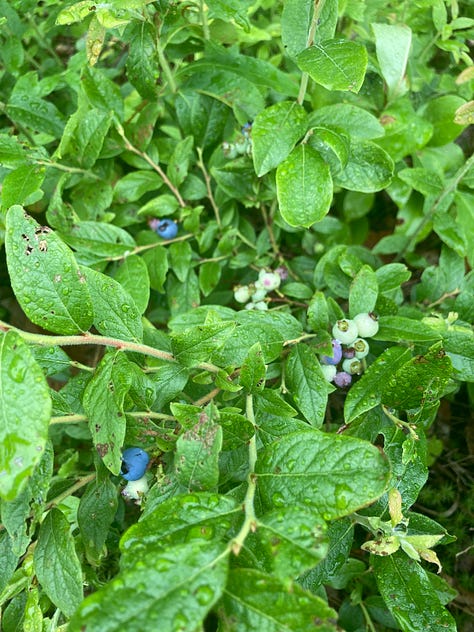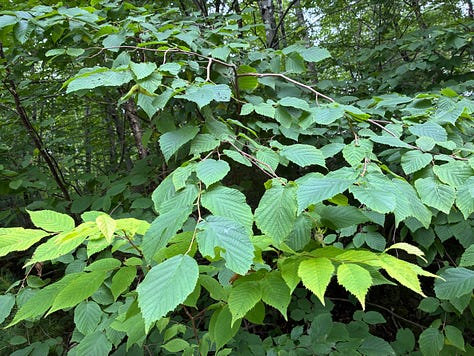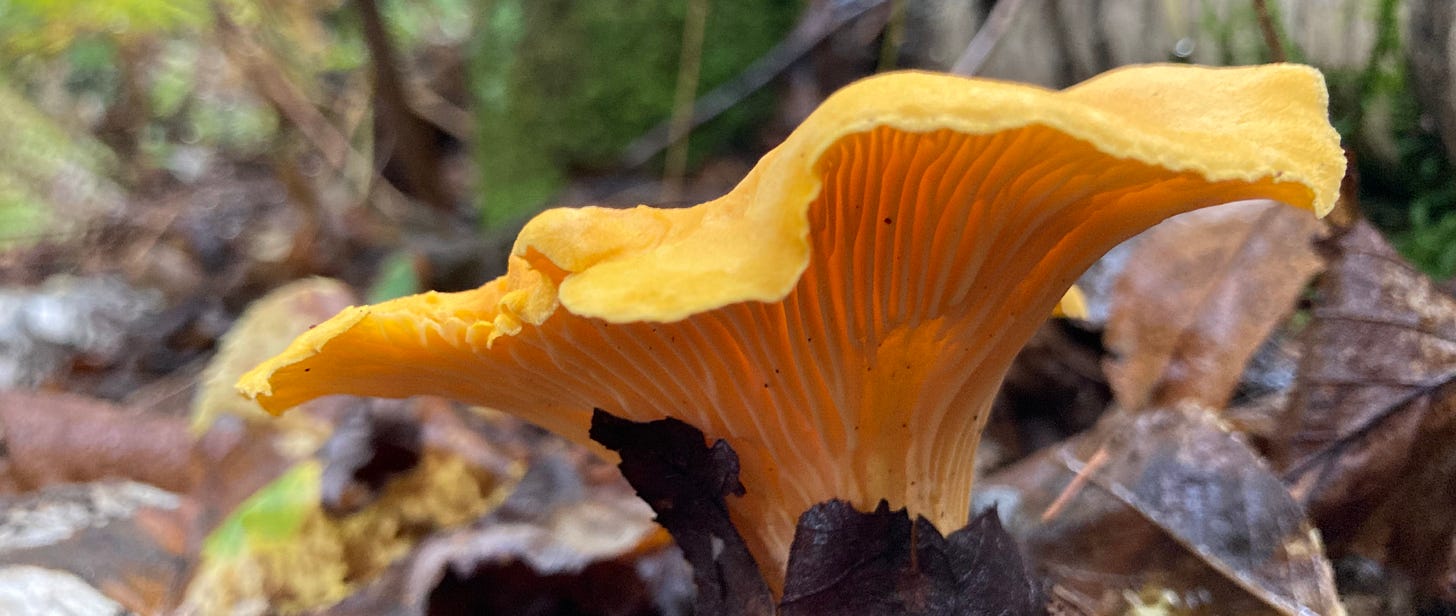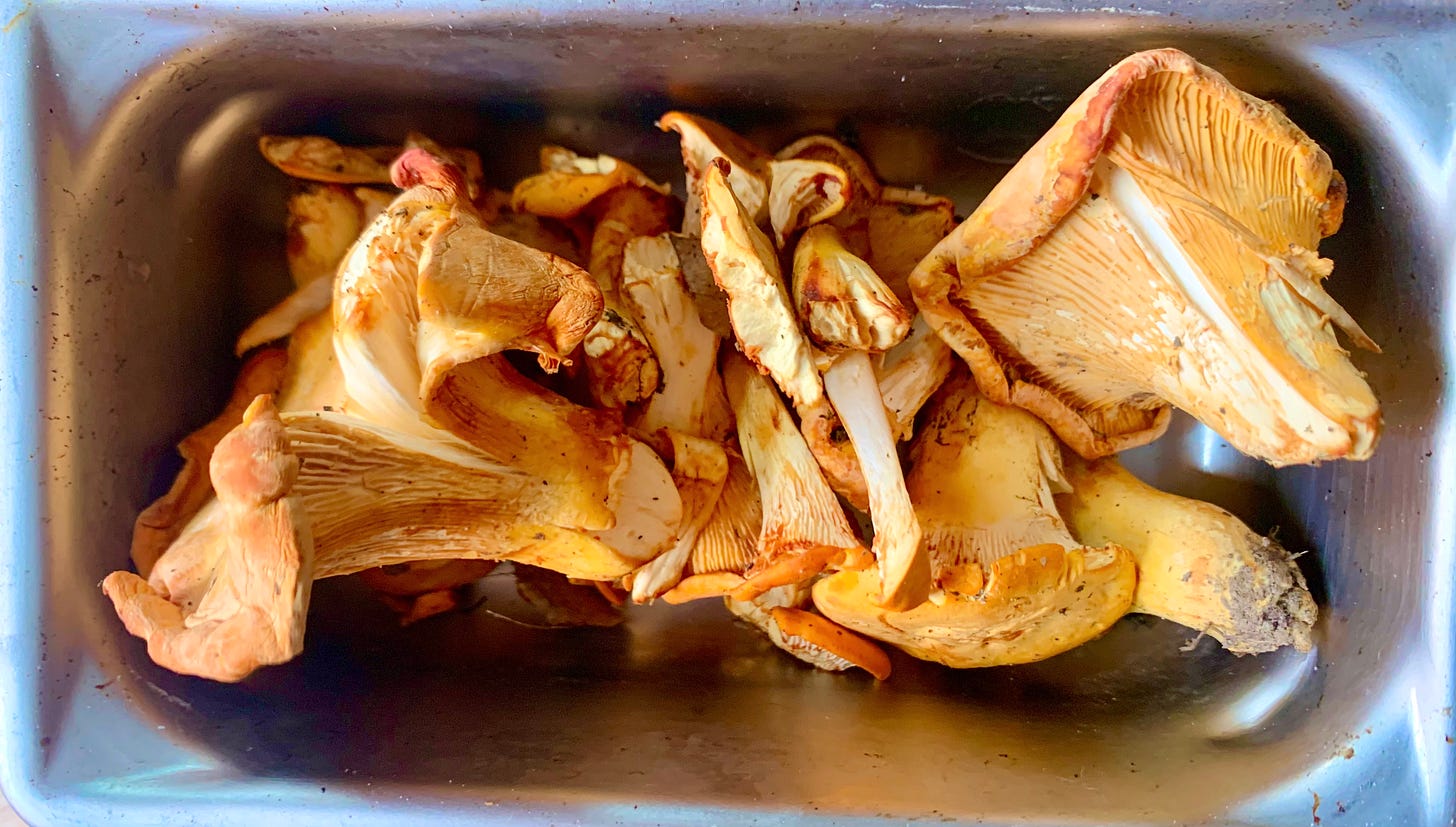As a forager here in New England, mushrooms are the wild food that excites me most. Endowed with good nourishment, magical aroma and excellent flavor they represent delightful treats to the senses tickling our eyes, nose and mouth. While I’m not completely down on cultivated mushrooms, wild mushrooms have real terroir, seasonality and they only grow when conditions “are just so.” To me, that’s a key part of their appeal. When they are there—they are there for a reason. Getting them at the right time makes the hunt really worthwhile.
From a nourishment perspective, mushrooms have a unique niche and offer a variety of valuable healthy components to help nourish you and your family. In addition to moderate food value, mushrooms contain arrays of non-nutritive plant substances—polysaccharides, indoles, polyphenols, and carotenoids in which cell and animal studies have shown antioxidant, anti-inflammatory, and anticancer effects.1
Native peoples in all cultures around the world have used wild mushrooms for food and medicine. Only in the last 200 years, as we’ve been convinced to abandon indigenous knowledge, have we begun to forget this wisdom and tradition. Fortunately, we have completely lost this knowledge [yet] and their are many journeys we can take to re-learn and develop this knowledge.
In early July, we are at the beginning of the most productive season for edible wild mushrooms here in central Maine. We seem to be behind southern Maine and the rest of America if my groups on Meta are any indication. It’s okay, I’ve learned that once I start seeing photos there, our season is about to start here. Once you get past impatience, it’s actually nice to see what is happening elsewhere and know you haven’t missed out locally. I highly recommend social media groups for beginners as well as experts. It’s helpful to see timely photos and good discussion as we move through various seasons.

I’ve been checking my spots and so far have had just one minor harvest of a lobster and some chanterelles. It’s been a bit dry and some moisture is in the forecast and hopefully will get things going. While I have been finding most of my spots empty of mushrooms as yet, I’ve been patiently reminding myself to keep my eyes open for other things:





As a forager it’s key to be mindful to “see that which are not out looking for.” E.g. if you are looking for mushrooms, you should be open to finding other things like berries, nuts, plants…you’ll often come home with things other than what you went out for. I try to train myself to see what I’m not looking for.
It took me a few years and some convincing from good teachers to think about wild plants and fungi as medicine in addition to food. Some plants and fungi that have high medicinal potential aren’t really edible or palatable, so learning about healing plants and fungi has broadened my foraging yields. More on that in another post.
Back to edibles. I’ve been teaching wild mushroom foraging in New England and created a wild mushroom guide last year to use when I have classes.
Today, I’ve included the wild mushroom overview in downloadable PDF format you are free to share. It is copyrighted material, so if you’d like to use photos, check with me and I’ll send you originals which can be used for free with attribution.
Wild mushrooms grow in a completely different environment from cultivated mushrooms and tend to have better concentrations of both nourishing and wellness compounds. And when it comes to flavor, wild mushrooms are really in a league of their own.
I started to forage my own wild mushrooms about 20 years ago when I lived in Vermont. I was working for a gardening company whose office at the time was in an old farmhouse surrounded by the abandoned fields of the old farm. Beyond the eastern field were woodlands featuring several miles of hiking trails, perfect for a lunchtime mind-clearing walk. Wandering at lunchtime my first summer there, I started to notice these orange mushrooms near the trail. A couple of times I walked by giving barely a passing glance. One day, when I had some extra time, I went off the path for a closer look. These orange beauties reminded me of mushrooms I’d worked with at The French Laundry and some other good restaurants.
I wasn’t completely sure, so I harvested some and took them home for further evaluation. And I made a clear mental note about where I found them on the trail. It turns out that golden chanterelles are fairly common, have some unique features that make them pretty easy to ID and they taste great. I do see them in fancier stores these days, but they usually look sad compared to what you find yourself with some training. I went on to harvest that spot yearly.
After a few years, a couple of good books and lots of internet spelunking, I started to be comfortable with ID for about two dozen varieties. In New England, that makes for a lot of opportunity from May-November. July is when most of the varieties start to make their appearance.
Today, I am comfortable with about 50 varieties and learn new ones every season. I’ve mapped them on my calendar based on prior years and have logged the locations of good harvests. Depending on the type, you can often find mushrooms in the same spots for years. Or at least quite close by. And having an idea “when” to look “where” is key to be efficient with your foraging time. There is nothing better than going to a remote spot you’ve harvested in the past and hitting a flush at prime time.
In terms of prep and cooking, I’ll be posting about how I use the mushrooms I find and the unique flavors and food uses for each in future posts. You’ll see a lot of it in my notes feed. If I tried to include that here, I’d still be writing a couple of months from now, so I’ll cover them iteratively, as I find them.
My general advice is this: don’t get mortified by fear of poisoning. You are far more likely to get poisoned by food in markets than by wild mushrooms. And with a book or two, a few trips out with some more experienced foragers and by learning some key ID methods, you’ll be able to safely identify and cook wild mushrooms that you can find in your area.
I don’t have expertise outside New England. It is important that you find local and regional resources for mushroom foraging. While there are types that occur worldwide, they tend to vary in appearance even within the same families around the world.
In North America, all mushrooms can be safely handled with bare hands to take home for further evaluation.
When in doubt, throw it out. Do not talk yourself into an ID, ever. You’ll get another chance when you know more.
Clean and cook your wild mushrooms well. Like wild plants, things get covered with soil, humus etc,…in the wild. There isn’t any pack of elves out there in the woods and fields cleaning for you!
There may be some wild mushrooms that can be eaten raw—wait until you have developed significant knowledge and experience before you go there.
Wild food discovery can be exciting, nourishing and fun. But put your time in, learn your ID techniques, harvest honorably and share your harvest.
Further reading:
As always, thank you for reading my food pandering and my wanderings away from supermarkets and into local and wild food worlds. It inspires me that people follow me and subscribe. Know that I am honored by your attention and feel blessed too.
Start with whole foods and cook them yourself. Or sucker your children into cooking like my mom did. Eat slowly, together mostly and deeply enjoy your food—no matter what the rest of the world thinks. Food is life.
Good cooking, good eating, good loving - K. Paul
Happy cooking - Jacques Pépin
https://nutritionsource.hsph.harvard.edu/food-features/mushrooms/









What do you do with the hazelnuts?
Yes yes yes! I ID’d wild oyster mushroom last year (with thanks to the beetles who live in it). It was painstaking to choke out the beetles (I put the mushroom in a plastic bag in the fridge for the first 24 hours), then rip into tiny pieces, remove dead beetles and set mushroom pieces to dry. After that was done, my husband finally used them in a 4-mushroom soup. It was incredible! I have not had much luck identifying other mushrooms in our area (pacific northwest, Canada). Most mushrooms we see are gilled and not recommended for eating. I did some research on the witches’ butter mushroom. It has a cooling effect on the mouth and tongue and is recommended to use for cough syrup or you can candy it as cough drops. One natural eye cream I found also used this mushroom as a base ingredient! I am always on the hunt! We also have several shaggy mane mushrooms around but I found they have no shelf life and either need to be eaten right away or they go to waste. Can’t wait to dive into your guide!